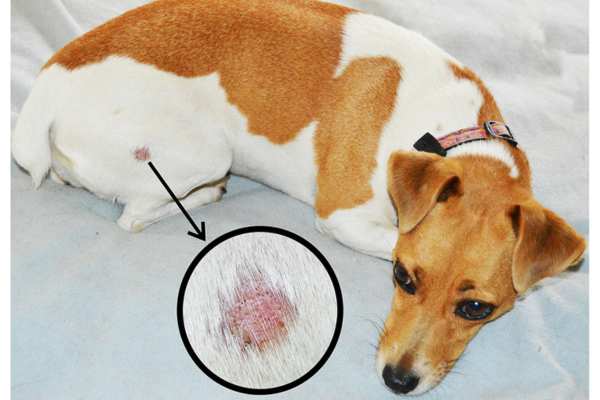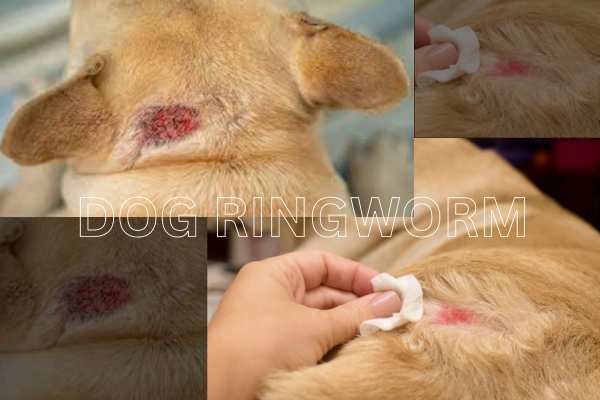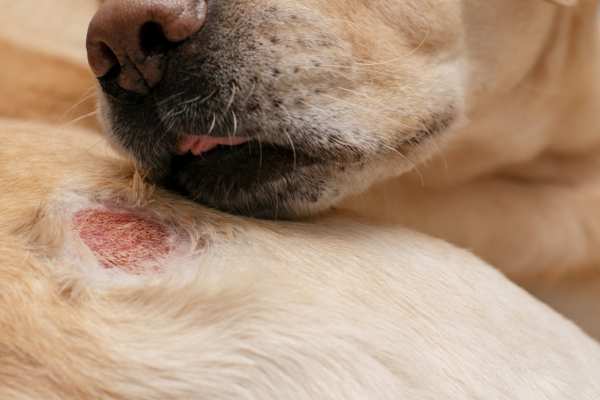Preventing Ringworm Spread: How Do Dogs Get Ringworm
How do dogs contract ringworm? This question is of paramount importance to those who are concerned about the health and well-being of their canine companions. Ringworm infection, a common fungal infection in dogs, can be transmitted through various means and poses a risk not only to the affected animal but also to humans who come into direct contact with an infected pets.

Understanding the mechanisms by which dogs acquire this condition is vital for its prevention and effective management. By examining the common ways in which dogs may contract ringworm, recognizing its symptoms, and implementing appropriate treatment methods, pet owners can safeguard their furry friends from this contagious ailment.
Additionally, taking preventative measures such as maintaining proper hygiene practices and providing a clean living environment can contribute significantly to keeping dogs free from ringworm infestations. In this article, we will explore these aspects comprehensively while adhering to an academic writing style that offers an objective perspective on the subject matter.
Key Takeaways
- Dogs can get ringworms by contact with an infected animals or individuals.
- Ringworm can be transmitted to other pets or humans, so it’s important to minimize the risk of spreading infection.
- Consulting a veterinarian is essential for effective ringworm treatments in dogs.
- Following a prescribed treatment after diagnosis of ringworm and plan diligently and completing the eradication of the infection is crucial for treating ringworm in dogs.
Understanding Ringworm in Dogs
Understanding cases of ringworm in dogs involves knowing how it is acquired and the causes behind it. Ringworm in dogs is a fungal infection that can be acquired through direct contact with infected animals or contaminated environments. The ringworm cases are caused mainly associated with two types of fungi: Microsporum and Trichophyton. These fungi thrive in warm and humid conditions, making places like animal shelters, grooming facilities, and kennels potential hotspots for transmission.

Dogs can contract ringworm by coming into contact with ringworm spores shed from an infected animal’s skin or hair. Additionally, contaminated objects such as bedding, brushes, or even humans can serve as carriers for the fungus. Transmission of ringworm in dogs can occur not only between animals but also from animals to humans, making it crucial to take preventive measures when dealing with infected pets.
Regular cleaning and disinfection of living areas, along with proper hygiene practices, play a vital role in controlling the spread of this fungal infection among dogs.
Common Ways Dogs Contract Ringworm
This paragraph will discuss the common ways dogs contract or may have ringworm cases.
Dogs can become infected with ringworm by coming into direct contact with animals or objects that are already infected.
Additionally, dogs may have ringworms through direct contact with the fungus and exposed to environments that have been contaminated with highly contagious ringworm fungi.
Lastly, dogs with weakened immune systems are more susceptible to contracting ringworm as their bodies may not be able to effectively fight off the infection.
Direct Contact with Infected Animals or Objects
Direct contact with infected animals or person is a common mode of transmission for dogs to acquire and spread ringworm. Dogs can contract this fungal infection by coming into direct contact with other dogs or cats, or even humans that are infected with ringworm. Additionally, dogs can also get ringworm by sharing contaminated objects such as bedding, grooming tools, or toys. This method of transmission occurs when the fungal spores from an infected animal or object come into contact with a dog’s skin or hair follicles.

To prevent the ringworm from spreading through direct contact, it is essential to practice good hygiene and regularly clean and disinfect any items that may come into contact with infected animals. It is also advisable to isolate animals affected by ringworm until they have been treated and cleared of the infection. Regular veterinary check-ups can aid in early detection and prompt treatment if a dog has been infected. By following these preventive measures and being vigilant about potential sources of contamination, dog owners can help treat and reduce the risk of their dogs contracting ringworm through direct contact.
Environmental Contamination
Environmental contamination can occur when fungal spores from infected animals or objects come into contact with the surrounding environment, increasing the risk of transmission to other susceptible individuals. To prevent ringworm transmission and ensure a safe environment for both humans and animals, it is essential to take appropriate measures.
Here are some key steps to consider:
- Regularly clean and disinfect areas where infected animals have been present.
- Use appropriate antifungal agents in cleaning solutions to effectively eliminate fungal spores.
- Wash bedding, toys, and other items that may come into contact with infected animals regularly.
- Avoid sharing grooming tools or other equipment between healthy and infected animals.
- Maintain good hygiene practices, such as washing hands thoroughly after handling infected animals or cleaning their living spaces.
By implementing these preventive measures and maintaining cleanliness in environments where dogs reside, the spread of ringworm can be minimized, ensuring the wellbeing of both pets and their owners.
Weakened Immune System
A compromised immune system significantly increases susceptibility to fungal infections such as ringworm. When a dog’s health is compromised, either due to an underlying medical condition or certain medications that suppress the immune system, its ability to fight off infections weakens. This weakened immune response makes them more susceptible to contracting ringworm from other infected animals or contaminated environments.
Ringworm is a fungal infection caused by a group of fungi called dermatophytes, which thrive in warm and moist environments. Dogs with compromised health are not only more vulnerable to these fungi but also have a harder time clearing the infection once they become infected.
It is therefore crucial for pet owners to ensure their dogs’ overall well-being and take necessary precautions to minimize their exposure to potential sources of ringworm, such as regular cleaning of living areas and avoiding contact with infected animals.
Recognizing the Symptoms of Ringworm in Dogs
One way to identify the presence and signs of ringworm in dogs and humans is by observing the appearance of circular, red patches on their skin. These patches may be accompanied by areas of hair loss and scaly or crusty skin. Dogs diagnosed with ringworms are highly contagious and may also experience itching and inflammation in the affected areas.
Since these symptoms can be similar to those of other skin conditions, it is important to seek a proper diagnosis from a veterinarian. To diagnose ringworm from dogs, a veterinarian may perform a physical examination and use tools such as Wood’s lamp or fungal cultures to confirm the presence of the fungus responsible for causing ringworm. Additionally, they may analyze fur samples under a microscope or conduct a biopsy if necessary.
Early diagnosing ringworm in dogs and prompt treatment are crucial to prevent the spread of infection to other animals or humans.
Treating and Preventing Ringworm in Dogs
To effectively treat and prevent ringworm in dogs, a combination of topical antifungal medications, oral medications, and environmental disinfection is typically recommended. These methods aim to eliminate the fungal infection that affects dogs with ringworm while minimizing the chances of recurrence.
Prevention methods play a crucial role in managing ringworm in dogs. Firstly, maintaining good hygiene by regularly bathing and grooming the dog can help prevent the spread of spores that cause ringworm.
Secondly, keeping the dog’s living space clean and dry can reduce the likelihood of fungal growth. Additionally, avoiding contact with infected animals or contaminated objects is essential for preventing transmission.
While natural remedies may be appealing to some pet owners, there is limited scientific evidence supporting their effectiveness in treating or preventing ringworm in dogs. Therefore, it is advisable to consult a veterinarian for appropriate treatment options and preventive measures.
Some additional preventive measures include:
- Regularly washing bedding and toys used by the infected dog
- Avoiding sharing grooming tools or accessories with other pets
- Keeping infected dogs isolated from healthy ones until they are fully treated
- Maintaining a balanced diet rich in immune-supporting nutrients
Keeping Your Dog Ringworm-Free
Maintaining a clean and dry living environment for your dog is essential in preventing the recurrence of ringworm. Regularly cleaning your dog’s bedding, toys, and grooming tools can help eliminate any fungal spores that may be present. Additionally, it is important to keep your dog’s living area free from excess moisture, as ringworm thrives in damp environments. Ensuring proper ventilation and avoiding overcrowding can help prevent the spread of infection among dogs.
In addition to maintaining a clean environment, practicing good hygiene when handling your dog is crucial in preventing ringworm transmission. Washing your hands thoroughly after touching an infected animal or contaminated surfaces can help minimize the risk of spreading the infection to other pets or humans.
When it comes to effective ringworm treatments, consulting with a veterinarian is recommended. They can provide appropriate treatment options for ringworm such as antifungal medications or topical creams that are safe and effective for treating ringworm in dogs. It is important to follow the prescribed treatment plan diligently and continue treatment even if symptoms appear to have resolved, as this will help ensure complete eradication of the infection.
By following these preventive measures and utilizing effective treatments as recommended by a veterinarian, you can keep your dog ringworm-free and minimize the risk of transmission to other animals or individuals.
See also:
- A Guide to Healthy Skin: Managing Dryness in Dogs
- Unlock the Soothing Power: Dog Shampoo for Itchy Skin
- How Do Dogs Get Heartworms
Frequently Asked Questions
Can dogs transmit ringworm to humans?
Dogs can transmit ringworm to humans through direct contact. Symptoms in dogs include circular patches of hair loss, redness, and itching. To prevent ringworm in dogs, maintain good hygiene, regularly clean their living areas, and avoid contact with infected animals or objects.
Are certain dog breeds more susceptible to ringworm?
Certain dog breeds may have genetic predispositions that make them more susceptible to ringworm. Additionally, environmental factors such as poor hygiene, crowded living conditions, and contact with infected animals can increase the likelihood of a dog contracting ringworm.
Can ringworm be passed from one dog to another?
Ringworm can be passed from one dog to another through direct contact or by sharing contaminated objects. To prevent transmission, treatment options include antifungal medications and regular disinfection of the dog’s environment. Implementing good hygiene practices can help in preventing ringworm in dogs.
Is ringworm more common in puppies or adult dogs?
Ringworm is more common in puppies than adult dogs. Puppies have weaker immune systems, making them more susceptible. Symptoms include circular patches of hair loss and scaly skin. Treatment typically involves antifungal medications and environmental disinfection.
Can ringworm be cured without medication?
Natural remedies for treating ringworm in dogs include topical application of antifungal agents like apple cider vinegar or tea tree oil. Additionally, a balanced diet rich in nutrients may help boost the dog’s immune system and prevent or manage ringworm outbreaks.
